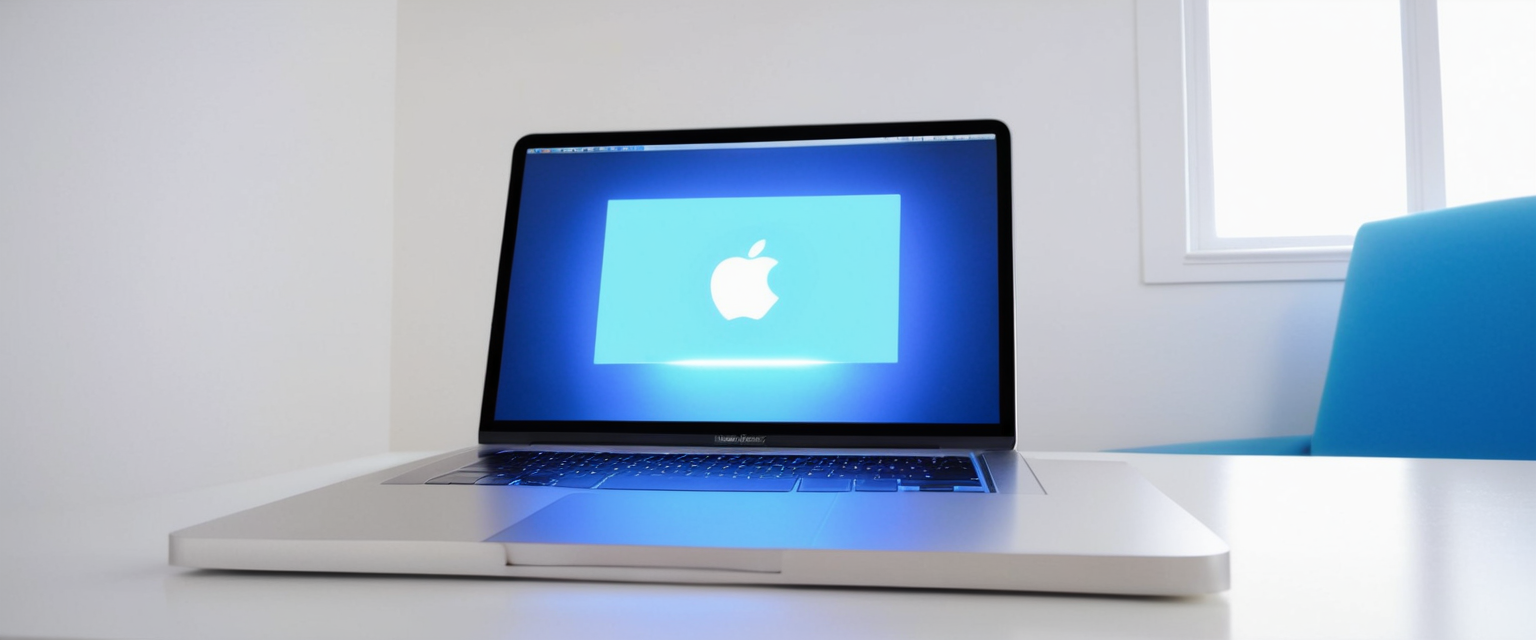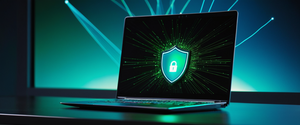
The question of whether MacBooks require antivirus software has long been contentious, but 2025 has brought this debate into sharper focus than ever before. While macOS continues to offer some of the strongest built-in security measures in consumer computing, the exponential growth in Mac-specific malware—representing a shocking 73% increase in incidents compared to the previous year—has forced a reassessment of conventional wisdom. This analysis examines the technical foundations of macOS security, the evolving threat landscape targeting Apple devices, the implications of third-party security software, and provides evidence-based guidance for Mac users navigating the complex decision of whether additional antivirus protection is necessary for their devices.
The Historical Context and Evolution of Mac Security Perception
For decades, Mac users have operated under the assumption that their devices were inherently immune to malware and viruses, a belief that Apple’s marketing and robust architecture have largely supported. This perception emerged from legitimate technical advantages that macOS possessed compared to Windows, including its Unix-based architecture, smaller market share making it a less attractive target for cybercriminals, and Apple’s stringent control over software distribution through the App Store. However, this narrative has become increasingly outdated as the security landscape has fundamentally transformed.
The turning point came during the Apple versus Epic Games trial when Craig Federighi, Apple’s senior vice president of software engineering, made a remarkable admission on the record: “We have a level of malware on the Mac that we don’t find acceptable.” This statement, made in a public court proceeding, shattered the carefully cultivated image of Mac invulnerability and acknowledged what security researchers had been documenting for years. The admission was particularly significant because it came from Apple’s highest-ranking executive responsible for macOS security, lending unprecedented credibility to concerns that had previously been dismissed by loyal Mac users and even some security professionals.
The growth of Mac adoption in both consumer and enterprise environments has directly contributed to this changing threat landscape. As Macs account for nearly 16% of global desktop and laptop market share in 2025, they have become an increasingly attractive target for cybercriminals seeking maximum reach for their campaigns. This transformation represents a fundamental shift from the era when Macs represented such a small market segment that attackers viewed them as economically unviable targets. Cybercriminals have now recognized that Macs offer a high-value target demographic—typically users with higher disposable income and professional status—making the investment in Mac-specific malware development profitable.
The Technical Architecture of macOS Security Defenses
To properly evaluate whether additional antivirus protection is necessary, it is essential to understand the sophisticated multi-layered defense system that Apple has built into macOS. These protections represent genuine technical achievements and demonstrate Apple’s commitment to security by design, yet they also possess inherent limitations that create gaps in coverage.
The Three Layers of Malware Defense
Apple structures macOS malware defenses in three distinct layers designed to address threats at different stages of the malware lifecycle. The first layer seeks to prevent the launch or execution of malware entirely, leveraging the Mac App Store and the combination of Gatekeeper with Notarization. The second layer aims to block malware from executing on customer systems through Gatekeeper, Notarization, and XProtect working in concert. The third and final layer focuses on remediating malware that has managed to successfully execute on a device, again primarily through XProtect’s capabilities.
The App Store itself represents the most restrictive of these approaches, as every application submitted to the official marketplace undergoes human review by Apple’s team of security experts before acceptance. This review process evaluates whether apps meet stringent requirements for privacy, security, and safety, with particular attention paid to whether developers unnecessarily request access to sensitive user data. Additionally, apps designed for children must follow extraordinarily strict guidelines around data collection to help protect young users. If an application is later discovered to violate Apple’s guidelines or to contain malicious behavior after being approved, Apple can quickly remove it from the store and notify users who have already downloaded the compromised application.
Gatekeeper extends these protections beyond the App Store by establishing a security framework for applications downloaded from the internet. When a user downloads and opens an app from outside the App Store, Gatekeeper verifies that the software comes from an identified developer, has been notarized by Apple to be free of known malicious content, and has not been altered since the developer created it. For apps that have not been previously launched, Gatekeeper requires explicit user approval before opening the downloaded software for the first time, providing a critical moment where users can reconsider their actions if they have been deceived. By default in macOS 10.15 and later, all Mac apps require notarization by Apple to launch, a requirement that helps ensure apps are free of known malware without necessitating that apps be distributed through the App Store.
Notarization itself functions as a dedicated malware scanning service provided by Apple, where developers who wish to distribute apps for macOS outside the App Store submit their applications for scanning. Apple examines this software for known malware and, if none is found, issues a Notarization ticket that developers typically staple to their app so Gatekeeper can verify and launch it even in offline situations. Apple maintains the ability to issue revocation tickets for apps that are later discovered to be malicious, even if they had been previously notarized, and macOS regularly checks for new revocation tickets so Gatekeeper has the latest information and can block the launch of such files. This process can block malicious apps with remarkable speed—updates happen in the background far more frequently than even the background updates that distribute new XProtect signatures.
XProtect and Signature-Based Detection
XProtect represents macOS’s built-in antivirus technology, employing signature-based detection and removal of malware through the use of YARA signatures, tools specifically designed to conduct signature-based detection of malware threats. Apple maintains a continuous process of monitoring for new malware infections and strains, updating XProtect signatures automatically and independently from regular system updates to defend Macs from emerging malware infections. XProtect automatically detects and blocks the execution of known malware, checking for known malicious content whenever an app is first launched, whenever an app has been changed in the file system, or when XProtect signatures are updated.
The technical implementation of XProtect demonstrates sophisticated engineering. When XProtect detects known malware, it blocks execution, moves the malicious file to the Trash, and alerts the user in the Finder. Apple may request to receive malware samples from the user to improve macOS security going forward, and if users agree, XProtect uploads only the malware executable itself or, if the malware is contained in an app bundle, the entire bundle—nothing else is shared with Apple.
However, XProtect’s reliance on signature-based detection inherently creates a critical vulnerability. Notarization is effective against known files or file hashes and can be used on apps that have been previously launched, while the signature-based rules of XProtect are more generic than a specific file hash, allowing detection of variants that Apple hasn’t previously encountered. Yet XProtect only scans apps that have been changed or apps at first launch—if a malicious app is launched initially, the signature detection rules must already exist in XProtect’s database to identify it. This lag between when new malware appears and when Apple’s security team can analyze it, develop signatures, and distribute them creates a window of vulnerability for so-called “zero-day” malware.
Should malware nonetheless make its way onto a Mac, XProtect includes sophisticated remediation technology. The system includes an engine that remediates infections based on updates automatically delivered from Apple as part of regular system updates and security patches. This remediation system removes malware upon receiving updated information and continues periodically checking for infections, though notably XProtect does not automatically restart the Mac after removing malware. Importantly, XProtect contains an advanced engine designed to detect unknown malware based on behavioral analysis rather than signature matching. Information about malware detected by this behavioral engine, including what software was ultimately responsible for downloading it, is used to improve XProtect signatures and overall macOS security.
System Integrity Protection and Hardware-Level Defenses
Beyond XProtect and Gatekeeper, macOS implements System Integrity Protection (SIP), a security feature introduced in OS X El Capitan in 2015 that leverages kernel permissions to restrict critical system files to read-only access. SIP comprises multiple mechanisms enforced by the kernel, with a centerpiece being the protection of system-owned files and directories against modifications by processes lacking specific entitlements, even when executed by the root user or a user with administrative privileges. SIP is enabled by default when users upgrade to OS X 10.11 or later, and on Intel-based Macs, disabling SIP removes protection for all partitions on the physical storage device. macOS applies this security policy uniformly to every process running on the system, regardless of whether it is sandboxed or running with administrative privileges.
On Mac computers with Apple silicon or an Apple T2 Security Chip, additional hardware-level protections enhance security beyond the software layer. These Macs feature secure storage where the storage drive is encrypted with hardware keys to provide advanced levels of protection. Macs with Apple silicon also support secure startup, which is enabled automatically and designed to verify that the operating system software loaded at startup is authorized by Apple, with automatic correction of issues if an untrusted component is detected. The Secure Enclave, a dedicated processor within Apple’s silicon chips, provides cryptographic services and stores encryption keys in a manner that prevents exposure to the main Application Processor, ensuring that critical encryption keys remain isolated and protected.
FileVault, Apple’s full-disk encryption technology, adds another crucial layer of protection by encrypting the entire startup disk, ensuring that if a Mac is lost or stolen, unauthorized parties cannot access data without the valid recovery key or password. On newer Macs with Apple silicon or T2 Security Chip, FileVault encryption is hardware-accelerated through the Secure Enclave, resulting in negligible performance impact. For older Intel-based Macs, FileVault may cause slower boot times but remains essential for data protection.
The Evolving Threat Landscape Targeting macOS in 2025
Despite these sophisticated built-in defenses, the actual threat landscape has escalated dramatically in 2025, with security researchers documenting unprecedented levels of malware targeting macOS systems. Understanding the specific types of threats and attack vectors helps illustrate why built-in protections alone may prove insufficient for many users.
The Alarming Rise in Mac Malware Incidents
The statistics regarding Mac malware growth are genuinely alarming. In 2025, Mac malware incidents have increased by a shocking 73% compared to the previous year, representing a fundamental shift in the threat environment. Even more concerning, Red Canary observed a 400% increase in macOS threats from 2023 to 2024, with this trajectory continuing into 2025. While macOS devices still represent a relatively small fraction of the endpoint devices under protection compared to Windows devices, the volume of threats has grown so dramatically that the percentage becomes almost immaterial—the absolute number of threats has exploded.
A significant portion of this threat explosion came from stealer malware that targeted macOS systems throughout 2024 and into 2025. Stealers like Atomic, Poseidon, Banshee, and Cuckoo variants focused on harvesting sensitive information including saved passwords, cryptocurrency wallet data, browser history, and credentials stored in user keychains. These malware families demonstrated sophisticated understanding of macOS architecture and targeted specific high-value data sources known to contain sensitive information that could be monetized by cybercriminals.
The key difference between macOS threats in 2024 versus previous years was sheer volume rather than necessarily unprecedented sophistication. Red Canary’s overall detection volume for macOS threats remained relatively low in absolute terms, primarily because macOS devices represent a small fraction of total endpoints, but the 400% year-over-year increase indicates a fundamental shift in attackers’ resource allocation toward Mac targeting. This growth represents not a gradual increase but an exponential surge indicating that cybercriminal organizations have made strategic decisions to develop and distribute Mac-specific malware at scale.

Specific Malware Families and Attack Vectors
The specific malware families discovered in 2025 reveal sophisticated attack techniques that Apple’s built-in defenses sometimes struggle to counter. Ransomware has emerged as the most prevalent and damaging form of Mac malware in 2025, with attacks encrypting user data and holding it hostage until victims pay ransom in cryptocurrency. These ransomware attacks have become increasingly sophisticated, often leveraging social engineering techniques to trick users into downloading malicious files, with phishing emails containing attachments or links that unleash ransomware payloads when clicked.
Protect Your Digital Life with Activate Security
Get 14 powerful security tools in one comprehensive suite. VPN, antivirus, password manager, dark web monitoring, and more.
Get Protected NowTrojan horses have maintained their position as a significant threat in the macOS ecosystem, with these deceptive programs masquerading as legitimate software to trick users into granting access to sensitive information. Once installed, trojans steal passwords, financial data, and other confidential information, and in 2025, trojans are frequently distributed through popular applications, taking advantage of user trust in well-known software. Cybercriminals have become adept at creating convincing copies of legitimate apps, complete with similar icons and descriptions, making it increasingly difficult for users to distinguish between genuine and malicious software.
Backdoors pose particularly concerning threats to Mac security, as these malicious programs create hidden entry points into systems, allowing attackers to gain remote access and control infected devices. The impact of backdoors can be severe, as they often go undetected for extended periods, giving cybercriminals ample time to exfiltrate data or launch further attacks. Backdoors employ various tactics to evade detection, including hiding in system processes, using encrypted communication channels, and employing polymorphic code that changes its signature to avoid antivirus detection.
2025 has particularly seen the rise of sophisticated stealers like “Cthulhu Stealer” and Remote Access Trojans (RATs) such as “HZ RAT” targeting Mac systems. These malware types focus on gathering sensitive information and providing complete control to attackers, respectively. Stealers harvest a wide range of data including saved passwords, cryptocurrency wallet information, and browser history, while RATs give attackers full remote access to infected systems, allowing them to execute commands, transfer files, and monitor user activity. The underground distribution channels for these advanced malware types indicate a high level of sophistication among cybercriminal groups targeting Mac users.
Most concerning are emerging variants like Atomic Stealer, which spread via disk image (DMG) files containing instructions that directed users to right-click on downloaded software and select “Open,” deliberately bypassing macOS Gatekeeper controls designed to prevent unsigned software execution. This technique exploited a loophole in Gatekeeper’s implementation that allowed users to manually override security warnings by right-clicking, creating a persistent attack vector until Apple removed this capability in macOS Sequoia in September 2024. When this Gatekeeper bypass was closed, 95% of stealer infections had already occurred before the fix, demonstrating how this single vulnerability had enabled massive-scale malware distribution.
Zero-Day Vulnerabilities and The Limits of Signature-Based Detection
A critical vulnerability in signature-based detection systems like XProtect is their inability to protect against zero-day malware—threats with unknown signatures that Apple’s security team has not yet analyzed and added to the XProtect database. The lag between when new malware appears in the wild and when Apple’s security team can analyze it, develop signatures, and distribute them through automated updates creates a window of vulnerability during which users remain unprotected. During this window, even XProtect cannot detect or block the malware because the signatures do not yet exist in the system.
This vulnerability was dramatically illustrated by actively-exploited zero-day vulnerabilities disclosed in 2025. In August 2025, Apple disclosed an actively-exploited zero-day vulnerability tracked as CVE-2025-43300 affecting iOS, iPadOS, and macOS. The defect, an out-of-bounds write vulnerability in the Image I/O framework responsible for processing image files, allowed attackers to process a malicious image file resulting in memory corruption. Apple acknowledged that the company was aware of reports that this issue may have been exploited in extremely sophisticated attacks against specific targeted individuals. This pattern continued throughout 2025, with Apple addressing its fifth zero-day vulnerability of the year by August, indicating an alarming trend.
The nature of zero-day vulnerabilities means that built-in defenses relying on known malware signatures cannot provide protection until Apple identifies the vulnerability, develops a patch, and users install it. During this window, even the most robust built-in security features prove inadequate. Third-party antivirus solutions using behavioral analysis and heuristic detection rather than pure signature matching can sometimes identify suspicious behavior patterns that indicate zero-day exploitation, though this approach remains imperfect.
Third-Party Antivirus Software: Capabilities and Controversies
The question of whether to install third-party antivirus on Mac involves weighing potential security benefits against performance impacts, compatibility issues, and the sometimes controversial practices of security software vendors.
What Third-Party Antivirus Provides Beyond Built-In Protections
Dedicated third-party antivirus software like Intego, Kaspersky, Bitdefender, Norton, and others offers several capabilities that Apple’s built-in tools do not provide. Most significantly, many third-party solutions offer real-time scanning for emerging and unknown threats through behavioral analysis rather than relying exclusively on known signatures. These solutions employ heuristic engines designed to identify suspicious behavioral patterns that might indicate zero-day malware or novel threat variants that haven’t yet been added to signature databases.
Additionally, third-party antivirus tools typically provide web protection that blocks phishing sites before they load, preventing users from accidentally visiting malicious websites even if Gatekeeper has not yet identified them. Email scanning for malicious links or attachments offers protection against phishing campaigns and malware distribution through email vectors. Scheduled system scans with automatic quarantines provide regular comprehensive checks of the entire system rather than relying on launch-time detection. Firewall customization with app-level permissions and alerts enables users to control which applications can access the network, a capability beyond macOS’s built-in application firewall. Privacy tools to block tracking scripts and snooping attempts protect against behavioral tracking and data collection beyond what macOS’s built-in privacy controls manage.
Testing conducted by independent security evaluation firms validates that well-regarded third-party antivirus solutions do indeed provide additional detection capabilities. In June 2025, AV-TEST evaluated nine home user security products for macOS Sequoia, finding that products from Avast, AVG, Avira, Bitdefender, ESET, F-Secure, Kaspersky, Norton, and Protected.net all achieved certified status with perfect or near-perfect scores in protection, performance, and usability. Products achieving scores of 10 points or higher received the AV-TEST seal of approval, with most achieving perfect 100-point scores in all three categories.
Performance Impact and Compatibility Concerns
A historical concern among Mac users has been that third-party antivirus software causes performance degradation, making Macs run noticeably slower. However, modern antivirus solutions have addressed this concern substantially. Contemporary antivirus software for Macs uses intelligent technologies to operate efficiently in the background with minimal impact on system performance. Cloud-based analysis removes computational heavy lifting from the device and moves it to powerful external servers, while optimized real-time scanning focuses only on new or changed files rather than repeatedly scanning unchanged system files. For intensive full-system scans, users can schedule these to run overnight or when not actively using the computer. Independent testing by AV-Comparatives in 2025 found no meaningful impact on system performance with any of the tested antivirus solutions, contradicting the historical narrative that third-party security software necessarily slows Macs down.
However, compatibility issues remain a legitimate concern. Some third-party security software has historically caused system instability or compatibility problems with certain macOS versions or legitimate applications. While reputable vendors work to minimize these issues, users should research compatibility thoroughly before installing third-party solutions, particularly in enterprise environments where system stability is critical.
Controversies Surrounding Third-Party Security Software
A critical perspective emerges from examining the sometimes problematic practices of third-party security vendors. One well-known antivirus company was fined for uploading and selling personally-identified browsing and web purchasing history to third parties without proper disclosure—not because they collected the data, but because they failed to adequately disclose this practice in the fine print. Another well-known security add-on was reported as malware by Apple’s own security systems for multiple months before being corrected. Some security add-ons have erroneously attempted to delete parts of macOS itself, though these actions were blocked by built-in anti-malware protections.
These examples highlight a paradoxical risk in security software: sometimes the security software itself becomes a vector for harm, either through data collection practices, system interference, or legitimate false positives that block legitimate system components. Some VPN apps marketed as security solutions have earned reputations as “badly solving a problem that hasn’t existed for a decade” and as mechanisms perfect for personalized metadata collection. The incentive structures in the security software industry create risks where companies prioritize features, false positives, and intrusiveness over genuine security and user experience.
An Apple Community expert noted that “a whole lot of what I’d consider data-collecting or problematic apps or malware now have a EULA, an advertising budget, and are intentionally installed by the user as ‘security’ apps,” suggesting that the antivirus industry itself sometimes functions as a threat vector. This reality means that installing third-party antivirus introduces new risks alongside the security benefits it provides.
Divergent Expert and Industry Perspectives on Necessity
The question of whether MacBooks require antivirus has generated significant professional debate, with different security experts reaching different conclusions based on their assessment of risk tolerance, use cases, and the quality of Apple’s built-in protections.

The Minimalist Position: Built-In Protection Suffices
A substantial school of thought within the Apple community contends that macOS provides sufficient protection without third-party antivirus. Apple Community moderators with extensive expertise frequently recommend against third-party antivirus installation, noting that such software “can cause performance issues, security issues, and make macOS appear buggy,” and that “your Mac is worse with these types of Apps installed. These experts argue that Mac users cannot benefit from third-party antivirus products and, in fact, that these tools introduce more problems than they solve.
The logic behind this perspective acknowledges that “if you find yourself repeatedly being tricked into installing malware, then 3rd party antivirus protection might be useful,” but concludes that “the important part to remember is that, in this case, your Mac doesn’t need protection from the malware, it needs protection from you”—suggesting that user behavior and judgment matter far more than security software. This viewpoint emphasizes that practicing good computer hygiene—avoiding downloads from untrusted websites, not clicking links in emails from unknown senders, and exercising caution about what software gets installed—provides better protection than relying on antivirus software.
Proponents of this position note that most Mac users who practice basic security awareness simply do not encounter malware issues despite using their computers without third-party antivirus, suggesting that built-in protections genuinely are sufficient for mainstream users.
The Maximalist Position: Additional Protection Prudent
Conversely, security researchers and Mac-specific security vendors argue that additional antivirus protection is recommended, particularly given the transforming threat landscape. These experts contend that “the belief that Apple computers are inherently immune to threats is outdated”. As malware authors get smarter and Mac usage increases globally, attackers are actively targeting macOS with adware, phishing, and data-stealing software at unprecedented scale.
Proponents of additional protection argue that macOS provides a solid security baseline, but it is not enough on its own, especially for users who browse the web, check email, or install apps from anywhere other than the App Store. They note that Apple’s internal security measures are decent, but the increasing number of threats means there is a higher likelihood that new malware could find its way onto a system before Apple updates its databases—particularly regarding zero-day threats.
Security professionals also note that even an antivirus cannot protect against many attacks in which users are tricked into installing malware voluntarily. However, they argue that this human factor does not negate the value of having additional technical controls that can identify and remove malware that has been installed, serving as a safety net for moments when user judgment fails.
The Pragmatic Middle Position: Context-Dependent
A more nuanced perspective recognizes that the necessity of third-party antivirus depends fundamentally on individual use cases, risk tolerance, and user sophistication. This pragmatic position suggests that for casual users practicing good security hygiene, built-in protections may indeed suffice. However, for users who work with sensitive information, operate in high-risk industries, browse extensively on untrusted websites, or manage corporate environments, additional protection becomes prudent.
This perspective also acknowledges that while third-party antivirus may introduce some risks through performance impacts or data collection practices, the risks associated with no additional protection may outweigh the concerns for certain users. For enterprise environments where data security and compliance are critical, layered defense strategies combining Apple’s built-in tools with third-party endpoint detection and response (EDR) solutions have become increasingly standard.
Recommended Best Practices for Mac Security
Rather than providing a simplistic yes or no answer to whether MacBooks require antivirus, comprehensive security guidance acknowledges the complexity of the modern threat landscape and recommends a multi-faceted approach.
For Individual Consumer Users
Individual Mac users should prioritize keeping their operating system and all applications up to date with the latest security patches. Apple releases security updates on a regular basis, and these updates patch vulnerabilities that might be exploited by viruses. Keeping macOS current is arguably the single most important security practice, as many successful attacks exploit known vulnerabilities that patches could have prevented.
Users should enable FileVault encryption on their Mac to protect data at rest, ensuring that if the device is lost or stolen, unauthorized parties cannot access data without the correct password. For users with Apple silicon Macs, FileVault operates with negligible performance impact due to hardware acceleration. Users should also enable the built-in firewall by navigating to System Preferences > Security & Privacy > Firewall.
Strong password practices including unique passwords for different accounts, and enabling two-factor authentication wherever available, represent essential security fundamentals. Users should use a reputable password manager to generate and store complex passwords for each account, reducing the risk of credential compromise.
Regarding file downloads and app installation, users should be cautious and deliberate, downloading only from reputable sources such as the official App Store or developers’ official websites. Users should avoid downloading apps from untrusted websites, torrents, or third-party app stores, as these frequently distribute malware or modified versions of legitimate applications.
Web browsing practices matter significantly. Users should keep their web browser up to date, as browser updates often include patches for security vulnerabilities. Users should use HTTPS websites rather than HTTP, paying attention to whether the padlock icon appears in the address bar. Users should avoid visiting suspicious websites, and be cautious of unsolicited emails or messages asking for sensitive information.
Regular data backups through Time Machine or cloud-based services ensure that users can recover files in case of ransomware attacks or hardware failures. Users should test their backup systems at least quarterly to verify that backups are functioning correctly and that data can be successfully restored.
For users who decide to install third-party antivirus, they should research solutions thoroughly to ensure compatibility with their specific macOS version and ensure that the vendor has a positive reputation for both malware detection and privacy practices. Users should scan for viruses at minimum weekly, though real-time protection can reduce the need for frequent manual scans.
For Enterprise and Professional Environments
Organizations managing fleets of Mac devices should implement a comprehensive endpoint security strategy that combines Apple’s built-in protections with enterprise-grade mobile device management (MDM) solutions. This approach enables centralized policy enforcement, ensuring that all devices maintain encryption status, firewall settings, and security compliance.
Enterprise environments should enforce automatic updates and require users to maintain current OS versions, either through MDM policies or other compliance mechanisms. Organizations should implement conditional access policies that restrict access to sensitive applications or network resources based on device security status, including FileVault encryption status and OS version compliance.
For high-security environments, particularly those protecting sensitive data, organizations should consider deploying endpoint detection and response (EDR) solutions that leverage Apple’s Endpoint Security Framework to monitor system events and respond to suspicious activity. These solutions provide visibility and threat hunting capabilities beyond what built-in macOS protections alone provide.
Organizations should conduct regular security audits and maintain compliance with applicable frameworks such as the macOS Security Compliance Project, CIS Benchmarks, or NIST standards. Regular employee security training is essential, as social engineering and phishing remain the most common attack vectors against Mac devices, particularly in enterprise environments where over 90% of cyber attacks originate from phishing.
The Definitive Conclusion on MacBook Antivirus
The question of whether MacBooks require antivirus software does not admit to a simple, universal answer applicable to all users and contexts. Instead, the question must be answered through careful evaluation of individual circumstances, risk profile, use case, and personal preferences regarding security versus convenience tradeoffs.
MacOS genuinely does provide sophisticated, multilayered built-in protections through XProtect, Gatekeeper, Notarization, System Integrity Protection, and hardware-level security features that represent the strongest consumer operating system defenses available. For users who practice good security hygiene, keep their systems updated, and avoid downloading software from untrusted sources, these built-in protections may well prove sufficient to prevent most common malware infections.
However, the dramatic escalation of Mac malware threats in 2025—with 73% increases in incidents and 400% year-over-year growth in detected threats—demonstrates that the threat landscape has fundamentally transformed. Sophisticated malware families specifically developed for macOS now actively target Mac users, employing social engineering techniques and exploiting behavioral patterns to gain initial access. Zero-day vulnerabilities continue to emerge regularly, creating windows of vulnerability that signature-based detection cannot address. These realities suggest that the outdated assumption of Mac invulnerability is genuinely dangerous.
For users willing to tolerate the modest performance impacts and potential compatibility issues associated with third-party antivirus software, installing reputable solutions like Intego, Kaspersky, Bitdefender, or Norton can provide additional detection capabilities for emerging threats, behavioral analysis capabilities to identify zero-day malware, phishing protection, and other advanced features that Apple’s built-in tools do not offer. The quality of modern antivirus software has improved substantially, with independent testing showing minimal performance impact on contemporary macOS systems.
Enterprise organizations managing corporate Mac devices should implement comprehensive endpoint security strategies combining Apple’s native tools with MDM solutions and potentially third-party EDR tools to achieve the layered defense posture necessary for protecting sensitive data and ensuring compliance with security standards. The complexity of enterprise environments and the value of data at risk justify the investment in comprehensive security infrastructure.
Ultimately, the most important security practice for all Mac users is maintaining current software through automatic updates, practicing good judgment about what software to install and what websites to visit, using strong unique passwords with two-factor authentication, enabling FileVault encryption, and maintaining regular backups. These fundamental practices provide more protection than any antivirus software can deliver. Whether to add third-party antivirus on top of these fundamentals represents a personal decision based on individual risk tolerance, technical sophistication, and the importance of the data on the device. The evidence suggests that while not strictly necessary for all Mac users, additional antivirus protection represents a reasonable and prudent choice for many, particularly in an era when Mac malware has transitioned from theoretical concern to documented, escalating reality.






